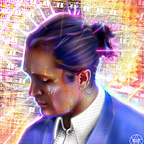A Problem With Panpsychism: Black-and-White Mary’s New Experience
Black-and-White Mary
The black-and-white Mary thought experiment involves a brilliant neuroscientist growing up in a room where there is no color, only black and white. Despite, or perhaps because of, this limitation, Mary learns everything there is to know about color perception. She writes papers, she reads papers, and every single piece of knowledge about how color perception works ends up being devoured by her capable brain. Then, one day, Mary steps out of the black and white room and experiences color for the first time. The old question is, does she learn anything new? I first heard of this thought experiment during my time in graduate school for philosophy at Texas State University about ten years ago, but I’ve been recently re-introduced via Philip Goff’s book, Galileo’s Error. Right off the bat, I had a hard time understanding the problem for materialism that the black-and-white Mary thought experiment purports to demonstrate, but upon my recent re-reading I now have a well-founded response to the problem I noticed so long ago.
The issue with Mary is that materialism is not disproven if she learns something new because her brain is doing something different when it experiences the actual phenomenon of color perception — we even understand why this would be the case. Still, discarding…
